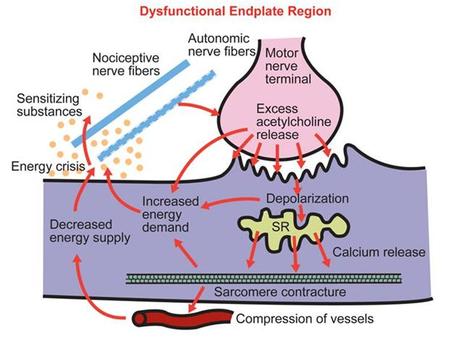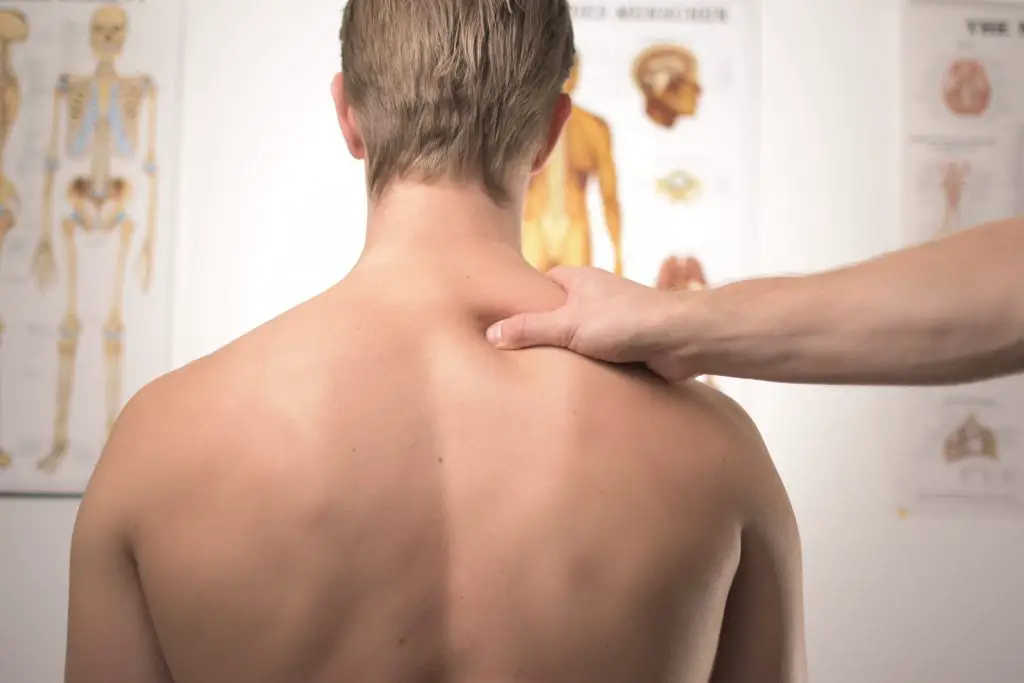What is the Local Twitch Response and is it needed for Dry Needling?
A Local Twitch response (LTR) is a visible and often palpable muscle contraction after a mechanical stimulation, most commonly after dry needling or during massage. A LTR is an involuntary quick twitch of the muscle that is caused by a spinal reflex. If you have ever had Dry Needling (DN) before, it is the quick and sometimes uncomfortable “reset” within the muscle belly. Patients often know when it occurs as the involuntary muscle twitch can startle them. LTR are sought after as a confirmation of a dysfunctional muscle and as a “successful” DN treatment. However, do we have to achieve an LTR for DN to be considered successful?
A LTR is most commonly sought in practitioners using the “pistoning” method of dry needling. The pistoning method is a quick “in and out” of the needle within a taut band of muscle until a LTR is elicited. Once a LTR occurs it causes a decrease in the neurological activity of the nerve at a possible trigger point. Chen et al found in animal studies that fast in and out dry needling achieved more twitch responses that other methods (2). Other methods of dry needling can cause the LTR.
What Happens During a Local Twitch Response?
A LTR occurs when there is an input or an external stimulus to the nervous system. As mentioned above this can occur during a massage, trigger point injections, and also commonly during dry needling. The LTR is thought to be a break in the trigger point neuromuscular abnormal cycle (1). See the video below as the a patient receives dry needling in the levator scapulae muscle.
Have a favorite exercise for knee pain? One of ours is the Eccentric Lateral Step Down. See Why Here:
The junction where the muscle and nerve meet, or the nerve endplate has been shown to have increased activity in trigger points. After an injury the nerve and muscle junction dysfunction may cause increased pain and irritability at the trigger point. Kuan et al found that the higher the resting pain intensities, the more total LTR’s that were triggered during trigger point injections(1).
The motor end plate activity was also found to have more decreased activity with rapid in and out dry needling. This is thought to be due to greater acetylcholine depletion at the neuromuscular junction. This is similar to the results of Botox injections that block the release of acetylcholine and decrease the end plate activity (3). The motor end plate activity has been shown to normalize after dry needling to the upper trapezius muscle (4). This may help decrease the pain and irritability seen after an injury.

Are Local Twitch Responses needed for a Successful Dry Needling Session?
Are LTR’s needed? Well it depends on who you ask. Hong found that when dry needling with lidocaine tipped needles that is was “absolutely necessary” to decrease pain, decrease reports of tenderness, and decrease reports of muscle tightness (5). Koppenhaver et al found that when performing dry needling in the lumbar multifidus those who did have a LTR achieved greater change in immediate muscle thickness and a greater reduction in short term pain relief. However this change was no longer present after a 1 week follow up (6). Indicating that a LTR may be beneficial in the immediate time frame but not likely needed for long term outcomes.
On the contrary: Perrault et al published the most comprehensive article to date looking at the importance of the LTR in 2017. They concluded “based on the evidence to date, the production of single or multiple LTRs during muscular TrPDN seems to have poor correlation in the short-term for the outcomes of pain and disability in patients with neck, shoulder or low back pain (7).” They did suggest that based on the current research that other types of needle manipulation such as needle winding may be just as beneficial and with less post needle soreness. Gerber et al found that dry needling improved pain pressure threshold, cervical spine range of motion, and reported pain on visual analog scale with no difference between those that had a LTR and those that did not when needling the upper trapezius (8).
Final Conclusion: We likely don’t need to elicit a Local Twitch response but more research is needed. The LTR should not be the goal of a manual or dry needle treatment at this time. Even though it is not warranted for a successful treatment, if one were to happen during a treatment by no means it a bad thing. This does signify a powerful stimulus to the nervous system which is the goal anyways right?
Works Cited:
- Kuan et al., 2012. T.-S. Kuan, C.-Z. Hong, S.-M. Chen, C.-T. Tsai, W.-C. Yen, J.-T. Chen, C.-Y.FengMyofascial pain syndrome: correlation between the irritability of trigger points and the prevalence of local twitch responses during trigger point injection. J. Musculoskelet. Pain, 20 (2012), pp. 250-256
- Chen et al., 2001 J.T. Chen, K.C. Chung, C.R. Hou, T.S. Kuan, S.M. Chen, C.Z. Hong
Inhibitory effect of dry needling on the spontaneous electrical activity recorded from myofascial trigger spots of rabbit skeletal muscle. Am. J. Phys. Med. Rehabilitation, 80 (2001), pp. 729-735 - Zhou and Wang, 2014 J.Y. Zhou, D. Wang An update on botulinum toxin A injections of trigger points for myofascial pain. Curr. Pain Headache Rep., 18 (2014), p. 386
- Abbaszadeh-Amirdehi et al., 2016a M. Abbaszadeh-Amirdehi, N.N. Ansari, S. Naghdi, G. Olyaei, M.R. Nourbakhsh. Neurophysiological and clinical effects of dry needling in patients with upper trapezius myofascial trigger points. J. Bodyw. Mov. Ther., 21 (1) (January 2017), pp. 48-52
- Hong, C. (1994). LIDOCAINE INJECTION VERSUS DRY NEEDLING TO MYOFASCIAL TRIGGER POINT. American Journal Of Physical Medicine & Rehabilitation, 73(4), 256-263. doi: 10.1097/00002060-199407000-00006
- Koppenhaver, S., Walker, M., Rettig, C., Davis, J., Nelson, C., & Su, J. et al. (2017). The association between dry needling-induced twitch response and change in pain and muscle function in patients with low back pain: a quasi-experimental study. Physiotherapy, 103(2), 131-137. doi: 10.1016/j.physio.2016.05.002
- Perreault, T., Dunning, J., & Butts, R. (2017). The local twitch response during trigger point dry needling: Is it necessary for successful outcomes?. Journal Of Bodywork And Movement Therapies, 21(4), 940-947. doi: 10.1016/j.jbmt.2017.03.008
- L.H. Gerber, J. Shah, W. Rosenberger, K. Armstrong, D. Turo, P. Otto, J. Heimur, N. Thaker, S. Sikdar. Dry needling alters trigger points in the upper trapezius muscle and reduces pain in subjects with chronic myofascial pain. PM R., 7 (2015), pp. 711-718
- David G Simons & John R. Dexter (1995) Comparison of Local Twitch Responses Elicited by Palpitation and Needling of Myofascial Trigger Points, Journal of Musculoskeletal Pain, 3:1, 49-61, DOI: 10.1300/J094v03n01_05
Disclaimer: The information provided in this post is for educational purposes only. This is not a substitute for a medical appointment. Please refer to your physician before starting any exercise program.

